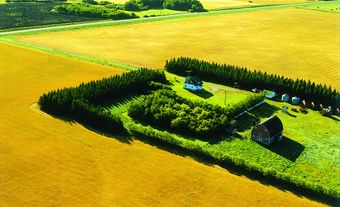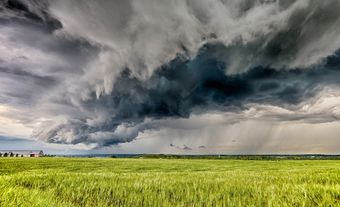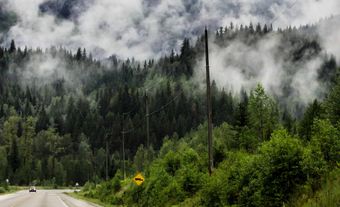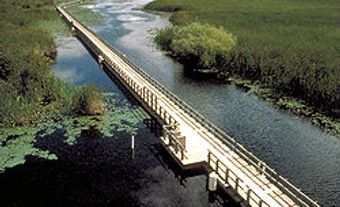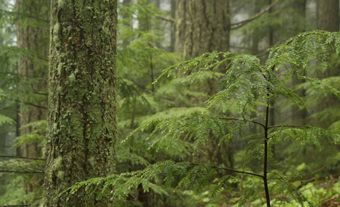Ferdinand Alphonse Fortunat Larose, agronomist (born 1 April 1888 in Sarsfield, Ontario; died 29 January 1955 in Montreal, Quebec). Throughout his career, Ferdinand Larose focused on agriculture in the United Counties of Prescott and Russel in Eastern Ontario. He is best known for having created the vast Larose Forest in a part of the counties which had become arid after intensive deforestation in the 19th century. The agronomist was also a leader for Franco-Ontarian cultivators. He chaired several cultivator associations and promoted agricultural training for Franco-Ontarians.

Education
Ferdinand Larose studied at the University of Ottawa, where graduated with a Bachelor of Arts in 1910, followed by a Bachelor of Philosophy and a Licentiate in Philosophy in 1912. In 1919, he earned a Bachelor’s degree from the Oka Agricultural Institute in Quebec, which was affiliated to the faculty of agriculture of Laval University in Montreal. (See also Agricultural Education.)
Career
In 1919, the Ontario Ministry of Agriculture opened a regional office in Plantagenet, where Ferdinand Larose was appointed agronomist. The recent graduate offered technical agronomic support to the Franco-Ontarian cultivators, often after Sunday mass.
During the 1920s and 1930s, Larose created agriculture clubs for students in rural areas and passed on his knowledge to future farmers. The students learned, among other things, the importance of using new seeds and high-quality products to improve yield. Thanks to Larose’s teachings, 19 young Franco-Ontarians enrolled in the Oka Agricultural Institute in 1943.
As of 1928, the agronomist led the transformation of a sandy desert into a vast forest in the United Counties of Prescott and Russell (see Larose Forest).
He encouraged cultivating new crops in the region, including hop, flax and red clover, to counter the effects of the Great Depression of the 1930s.
In 1934, Ferdinand Larose introduced French-language courses on agriculture in the counties of Kent and Essex of the Windsor region. The following year, he returned to Prescott-Russell to launch French-language courses for female farmers on agriculture, sewing and cooking.
Larose also helped found several associations, namely the Association des producteurs de semences de la Vallée de l’Outaouais (1932), the Association des laboureurs des comtés de l’est de l’Ontario (1934) and the Association des producteurs de semences des Comtés de Prescott et Russell.
During the Second World War, cultivators reached out Ferdinand Larose so that their sons would be designated agricultural labourers and hence exempted from military service. (See also Conscription in Canada.)
Ferdinand Larose retired in 1950 and died in Montreal on 29 January 1955.
Larose Forest
During the 19th century colonization of Eastern Ontario, the size of the region’s forest was significantly reduced. Until that time, it had consisted of approximately 50 types of trees, many of which were vast. Those were cut down for timber to build ships for the British Navy. The lumberjacks cleared the land, and it could now be used for agriculture.
Soon, the colonists realized that around the villages of Bourget, Cheney, Casselman and Limoges, the sandy terrain was not suitable for agriculture. After they abandoned the fields, erosion and desertification took over.
This region came to be known as the “Bourget Desert.” In 1920, the effects of erosion and forest fires resulted in a major landslide in Lemieux, which intensified the desertification.
Ferdinand Larose proposed a program to reclaim those lands and reverse the trend. His idea was to stabilize the sandy soils by planting thousands of trees which had already adapted to this environment.
In 1928, following the agronomist’s advice, the regional and provincial governments repurchased the arid farmlands and hired local workers to plant trees. Before the year was over, Ferdinand Larose had supervised the planting of 6,000 pine trees. ( See also: Reforestation; Silviculture.)
Legacy of the Larose Forest
Over the years, three generations of forest workers planted over 18 million trees and maintained the forest. It was designated a wildlife preserve by the Ontarian government, and it is studied by scientists in the field of forest resources management. It also welcomes visitors for outdoor activities.
In 2000, the provincial government transferred the forest management duties to the United Counties of Prescott and Russell.
As of the 21st century, the Larose Forest is one of the largest man-made forests in North America. Today, it is 108 km2 large and its pine trees stand over 25 m tall. It contains wetlands and mixed-wood forests, as well as roads and trails covering over 200 km. The South Nation River runs through the forest, as do many creeks. The forest’s flora and fauna are diverse: it is home to animals like chickadees and moose, to mushrooms and plants like wildflowers.
Honours
In 1988, Ferdinand Larose was posthumously awarded the first Mérite agricole franco-ontarien by the Union des cultivateurs franco-ontariens.
Since 2007, the Association canadienne-française de l’Ontario de Prescott et Russell awards the Ferdinand-Larose prize to francophone people or companies who strive to enhance the region’s environment.

 Share on Facebook
Share on Facebook Share on X
Share on X Share by Email
Share by Email Share on Google Classroom
Share on Google Classroom
